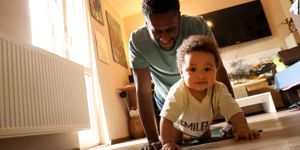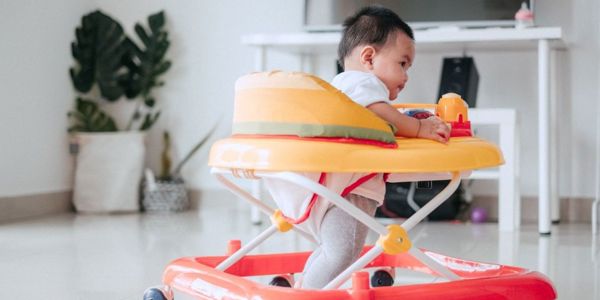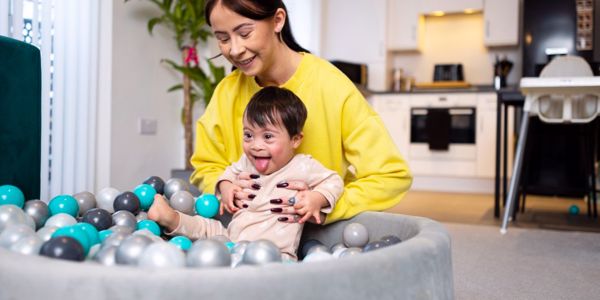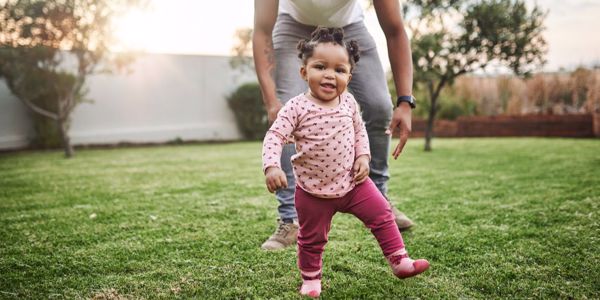Prior to opening my own clinic, I had spent most of my 20-year career as a pediatric physical therapist doing home visits through early intervention. I got really good at using my body as a piece of equipment. In most of the states I worked in, early intervention had a no-toy-bag policy. We were seeing the babies in their natural environment and that meant using whatever they had in their environment for therapy. I found that using my body was the best piece of equipment around.
Let’s Start with Tummy Time.
There are many times a baby will have a hard time tolerating tummy time on the floor. It is known that putting babies on their stomachs on an incline can make the position more tolerable due to taking some of the pressure off their little bodies. In the picture below, I have a baby resting on my legs. They are facing me. You can either do this activity with the baby facing you or facing away from you. This position is most safe for a caregiver when they are sitting on the floor with their backs resting on a wall or surface. When my legs are up, the baby is on more of an incline. As they start to develop better tolerance, I will move my legs down.
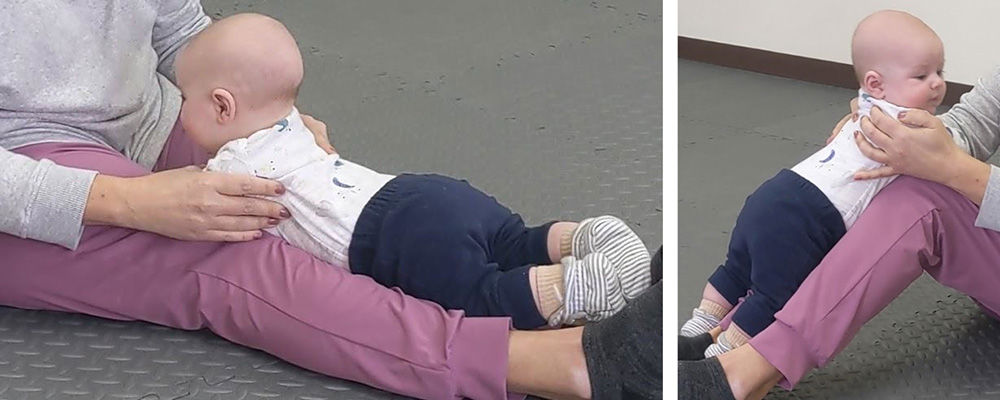
Sit-to-Stand & Standing
Another way I like to use my legs is to help with standing and the transition from sit to stand. I will frequently have the little one sitting on my legs first, working on their sitting balance. If needed, I provide support in front and back minimally with one to a few fingers. I encourage them to stand to reach for a toy and with my legs I am helping them keep their feet down. This activity is especially helpful for babies who seem to be on their toes often. If they need extra assistance, I will provide that at their pelvis, helping them stay fully upright.
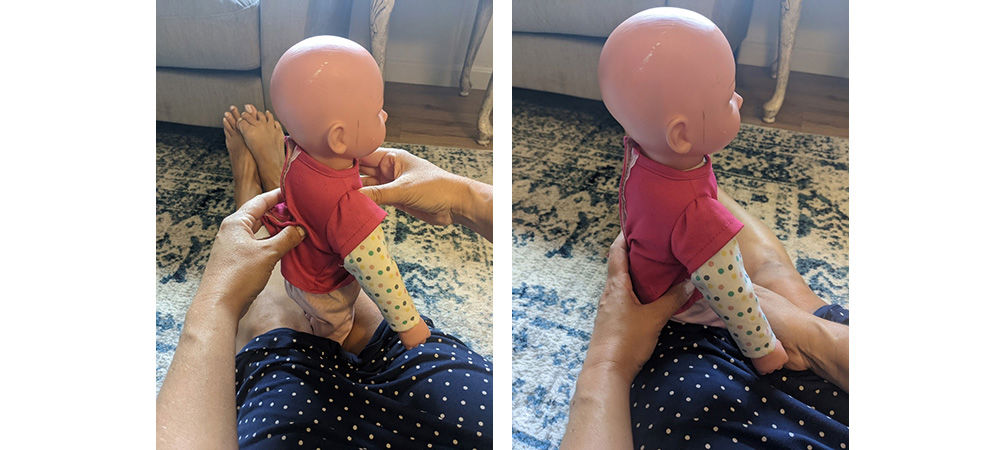
Once a baby is taking more weight through their legs and starting to stand with support, I like to work on improving their independent standing balance. One way I do this is using my chest to support their back when they are standing. So when you are on the floor with them, you will be positioned on your knees, or sitting, and they will be standing in front of you, leaning against your chest. You will slowly back away from them and see if they can stand independently. It is very challenging for a baby to go from being held directly to being put on the floor and standing on their own. Using this technique, we are offering them support and then slowly backing off.
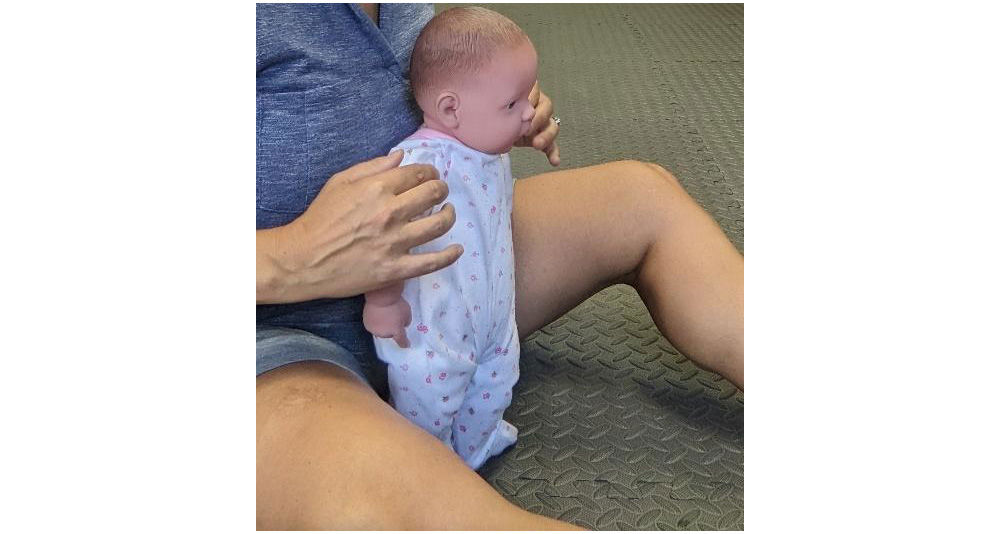
Onto Toddlerhood!
Once babies are walking, I like to work on refining their balance and ability to navigate their environment. This means being able to step over and around obstacles in their path. I like to use my legs as an obstacle for toddlers to step over. Whenever I am playing on the floor with a little one, I will move whatever toy they are engaged in away a few feet and then either put one or both of my legs in front for them to step over. I like to offer assistance of one finger or holding the back of their shirt to help them with their balance with this activity.
You don’t need fancy pieces of equipment to help your little one achieve those motor milestones. You can use whatever is around you, especially your own body to help them practice these skills! If you are looking for more support on helping your baby achieve those motor milestones in their first year check out my Navigating Motor Milestones in Your Infant’s First Year guide.


